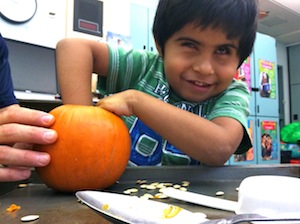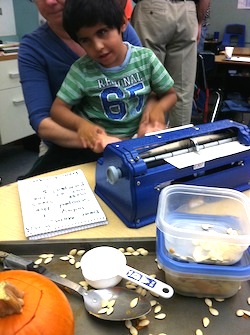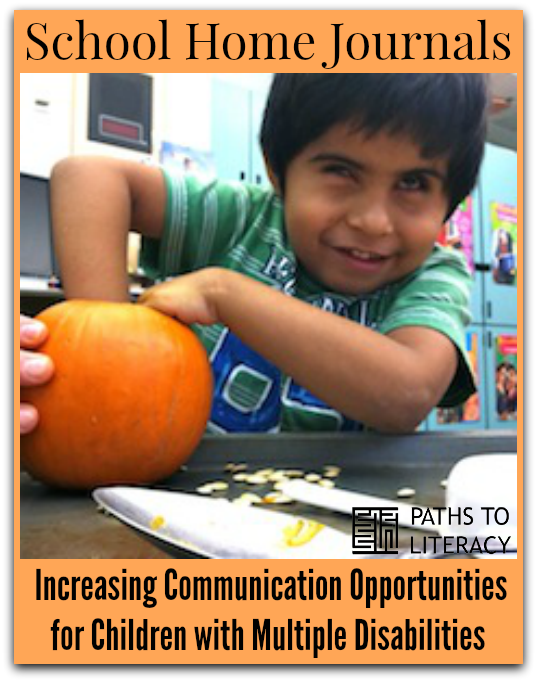
Around 4 pm every day, something wonderful happens to me. I get to reunite with my 3 children after school/work and find out how their days went. I get to hear about spelling tests, lunchbox trades, science experiments, and playground drama. Sometimes the back of the car is so noisy someone inevitably ends up in tears for getting cut off. What a lucky problem to have, really.
I say this because many years ago I attended an Augmentative-Alternative Communication (AAC) conference in Phoenix, Arizona and the presenter Caroline Musselwhite described a mother in an IEP meeting who only had one emotional request from the school staff regarding her daughter with multiple disabilities: “I just want her to be able to tell me one thing she did at school.” I had to admit I often had the same thought on the other end. “Boy, I wish she could tell me the amazing thing that happened to her this weekend. I just know she is thinking about it right now!”
If we find ourselves in this situation, we have a great student-centered literacy and communication opportunity in front of us. School-Home Journals! This type of literacy opportunity can:
- Reinforce existing routines and calendar systems
- Establish consistent symbol use across school and home settings
- Promote self-determination as students share motivating topics and experiences
- Bridge communication between school and home
Here is a basic outline of the process of journaling along with an example:
1) Identify a motivating experience from the student’s day.
I like to sometimes think of a journal entry as a one-page experience book. In the following example our student really enjoyed carving a pumpkin with his class during a communication/literacy group. In fact, he scooped every single seed out of his little pumpkin!
2) Determine how to represent this experience.
What can you collect that will remind the blind/VI learner of the experience later when he/she accesses it? We collected some of the slimy pumpkin seeds with our tactile learner who loved scooping and exploring between his fingers.
3) Dictate the journal entry using your student’s preferred expressive mode of communication. *
Our student dictated his favorite part of the activity given hand-under-hand object choices. While we touched the giant pile of seeds on the tray I said, “Hmmm. We can write ‘Today I scooped the most seeds!’ [pause while guiding hand-under-hand to the hollow pumpkin] or we can write ‘Today I reached inside the pumpkin.’” This particular student responded “SEEDS!” while moving his hands by himself back to the pile of seeds. ”
4) Make the journal entry permanent.

Our student received hand-under-hand access to his braillewriter as he wrote a journal entry home to his mother. In the photo on the left you can see a TVI providing this access, speaking as she brailles each of the words with the student. At times she paused to see if the student would finish the sentence for her. He did!

5) Model access to the journal entry and then practice.
It is important to mention that our goal for the student in this example was to practice independent access of tactile media (the seeds) and to start to understand that those seeds carried meaning. As soon as we saw the tips of his fingers make contact with the seeds we said, “Today I scooped the most seeds out of the pumpkin.” If his fingers came off of the seeds, we turned our voices off. After accessing the seeds to read, we also provided hand-under-hand access to the conventional braille form at the top of the page.
6) Send it home!
This particular journal entry could fit into a 3-ring binder that goes back and forth between school and home.
*The journal entry will vary depending on the communication/literacy level as well as the preferred learning medium.
Here are some other possibilities:
- Collect whole objects in sandwich or gallon-size baggies and handwrite a quick note that describes the experience. As the student and a parent explore the object/topic together, the salient information on the note can prompt a conversational interaction.
Other ideas:
- Pencil in notes at the bottom of the journal entries as a way to collect data on how many steps the student was able to carry out independently during the process.
- Don’t be afraid to re-use and recycle topics. The more practice and repetition, the more likely your student is to access literacy and communication skills more independently.
- If your student is new to journaling, take pictures of how they read or make a short video clip and share with the family. This may help family members and school staff see how the student accesses learning media, and skills may carryover from school to home (or vice versa).
- Use your student’s existing calendar and schedule symbols to make journal entries. For example, this low vision student’s weekly calendar can be used on Wednesday to journal “Today I went to music class!”

- Establish a template for the journal entries. One of my favorites is “Today I ______.” Using the weekly visual schedule above, as the student removes her symbol for “Wednesday,” she could move it to a designated target in her journal. This would add 30 seconds to an already-established routine in the day. Think about the parent receiving school news as an authentic note written by their child!

- Turn the collected journal entries into a student portfolio! Share with classroom visitors and of course with one another.
- See if parents or family members are interested in completing a weekend page for the journal. Encourage them to collect an object or symbol from a motivating experience at home with their child and send it to school with a note or photo attached to describe the experience.
- Keep it simple! Remember the mom I described at the beginning of the post? She wanted to know just one thing her daughter did at school. Most importantly (and this is the catch) she wanted that one thing to come from her child.
Please let me know if you have other creative and accessible ways for your students/children to share daily news between school and home!







